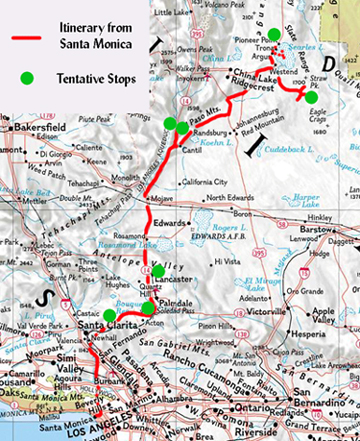
| ||||||||
| GEOL 5 - HISTORICAL GEOLOGY | Last Updated • December 6, 2008 | |||||||
This class is a 4-units, general education class that includes both lecture and lab; an introduction to geology is followed by the study of the principles of stratigraphy and sedimentology. Knowledge of these principles will help the students understand how different physical and chemical conditions, together with biological activity, interacted with each other and the environment to make Earth such a unique planet in the Solar System. If you already have a base knowledge of geology you might find yourself at a slight advantage, but all materials will be explained thoroughly. You still need to be aware that this class requires continuous attention and that, in order to succeed, you will need to dedicate a considerable amount of time to study and work on its materials. 4311 - GEOL 5, HISTORICAL GEOLOGY lecture and lab Class Hours: Tuesday (lecture), 6.45-9.50, Drescher Hall, room 128 Thursday (lab), 6.45-9.50, Drescher Hall, room 128 Required Textbooks: Lecture Textbook: S. M. Stanley, Earth System History, 2nd edition (2005), W. H. Freeman and Company, New York Lecture Textbook: J. W. Schopf, Cradle of Life, 1st edition (1999), Princeton University Press, Princeton and Oxford Lab Manual:H. L. Levin and M. S. Smith, Laboratory Studies in Earth History, 9th edition About these textbooks, please note: Both Lecture Textbooks can be bought used, as long as they are the current edition. The bookstore will probably not have a copy of the second book (Cradle of Life) right away. It can be bought either on Amazon or at the UCLA bookstore. But DO NOT buy used copies of the lab manual for any reason; the lab manual pages are turned in to the instructor for grading after a lab, and many students who bought used copies in the past, either from the bookstore or from other students, found out after a week or two that they had in their hands incomplete manuals, with several missing pages. I will not accept lab work neither on older editions, even if brand new; nor on used copies of the new edition. So, for the lab manual, just buy a brand new copy. Exams: All exams include both lecture and lab materials. The final exam will be partially cumulative for both lecture and lab; it will include a small section on older materials covered in previous tests and a larger section on new materials covered after the second test. Exam dates are as follows: exam 1 - Tuesday, October 7, 2008: study guide (available since September 22, 2008) exam 2 - Tuesday, November 4, 2008: study guide (available since October 26, 2008) exam 3 - Thursday, December 11, 2008: (cumulative final exam): study guide (available since December 6, 2008) Please, refer to the class syllabus for further information and/or details
| GEOL 35 - FIELD STUDIES: CALIFORNIA | Last Updated • September 22, 2008
| This class is a general education, hands-on class that will allow you to see and experience in person some prominent geologic features of southern California. There are no prerequisites, there are no exams, there is no homework. All you have to do is come to a few introductory class meetings, then come in the field and write a brief report on the geologic features and aspects you studied and saw. If you want to have an idea of what we do in the field, check out the images from the Spring 2007 trip to Mono Lake and the Owens Valley and from the Spring 2008 trips to Wheeler Gorge and the Carrizo Plain and to the Mojave Desert and the Mitchell Caverns.
Class Meetings:
Field Trip: Among other things, we will be able to look at the San Andreas Fault; study white, pink and brown conglomerates and sandstones and their unusual erosional forms at Red Rock Canyon; and finally observe the very characteristic Trona Pinnacles, where limestones built towering structures at the bottom of a lake now long gone.
We will be camping for free in the desert, by the Pinnacles. This is a primitive location, with no facilities or services of any sort available; bring everything you need for two nights and two days in the desert. Remember that absolutely no alcohol is permitted during the field trip. On Saturday and Sunday we will get up at about 6.30 AM and, after breakfast (bring your own), will drive a few miles to downtown Trona (!) and collect our own salt crystals during the Gem-O-Rama event that will be held in Trona (San Bernardino county, California). Bring sturdy clothes and sample bags. Again, more information will be given during the first meeting, and an introductory video on what we will do will be shown.
We will leave the Santa Monica College parking lot at 8.00 AM sharp on Friday, October 10, 2008
Field Trip Map  Alessandro Grippo, TOPO software © National Geographic Society
Costs:
ALL other costs (transportation, food, field trip fees for mineral collecting, etc.) will have to be paid for by the students. | |||||